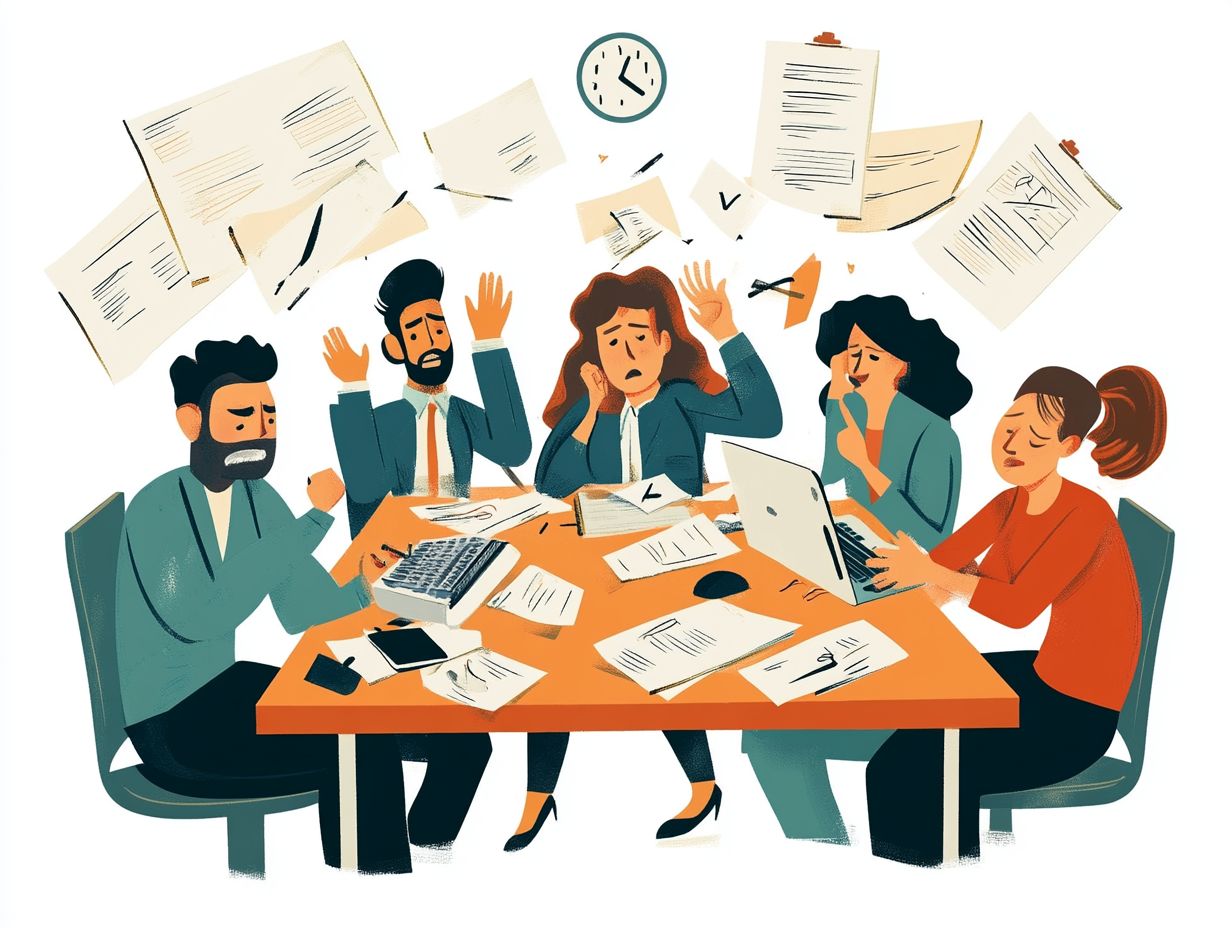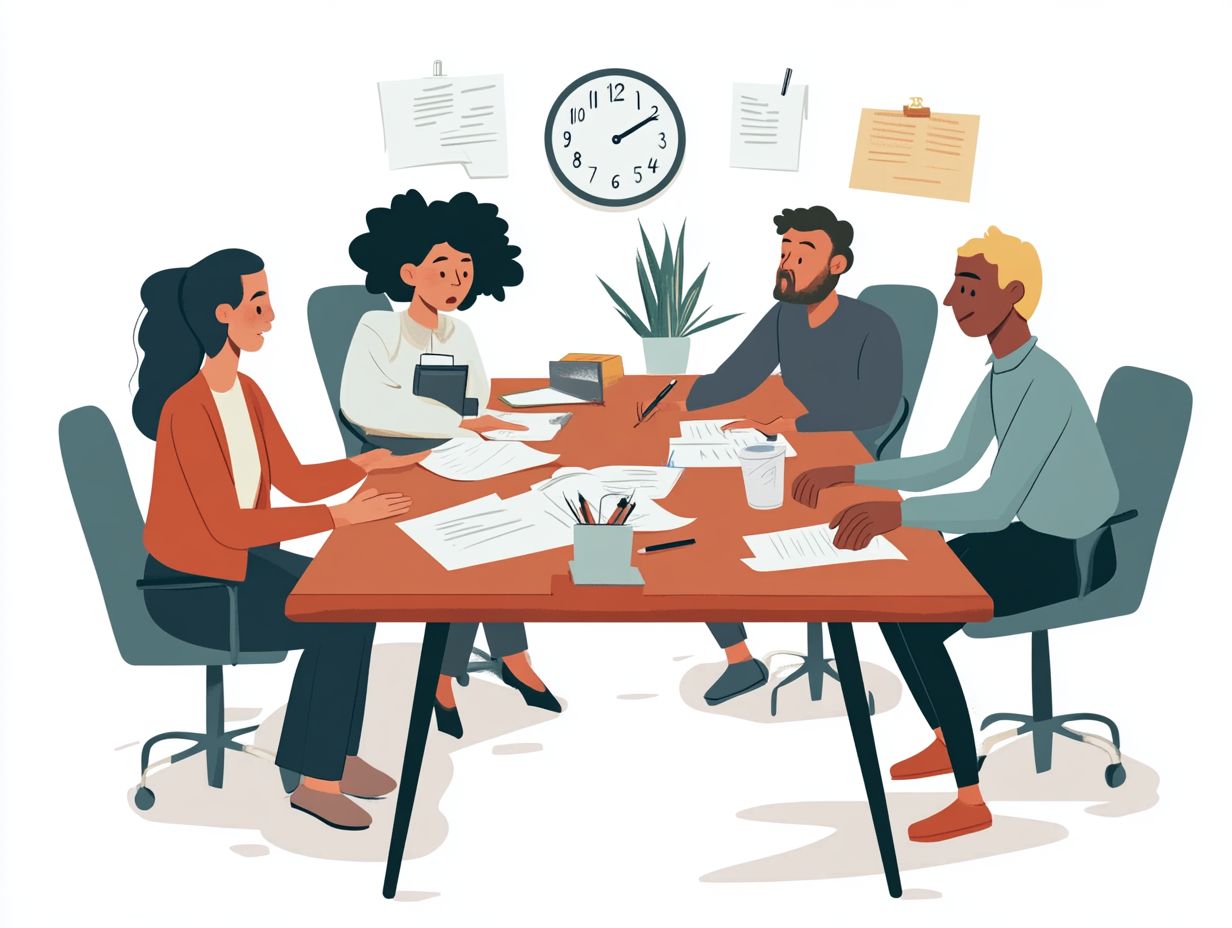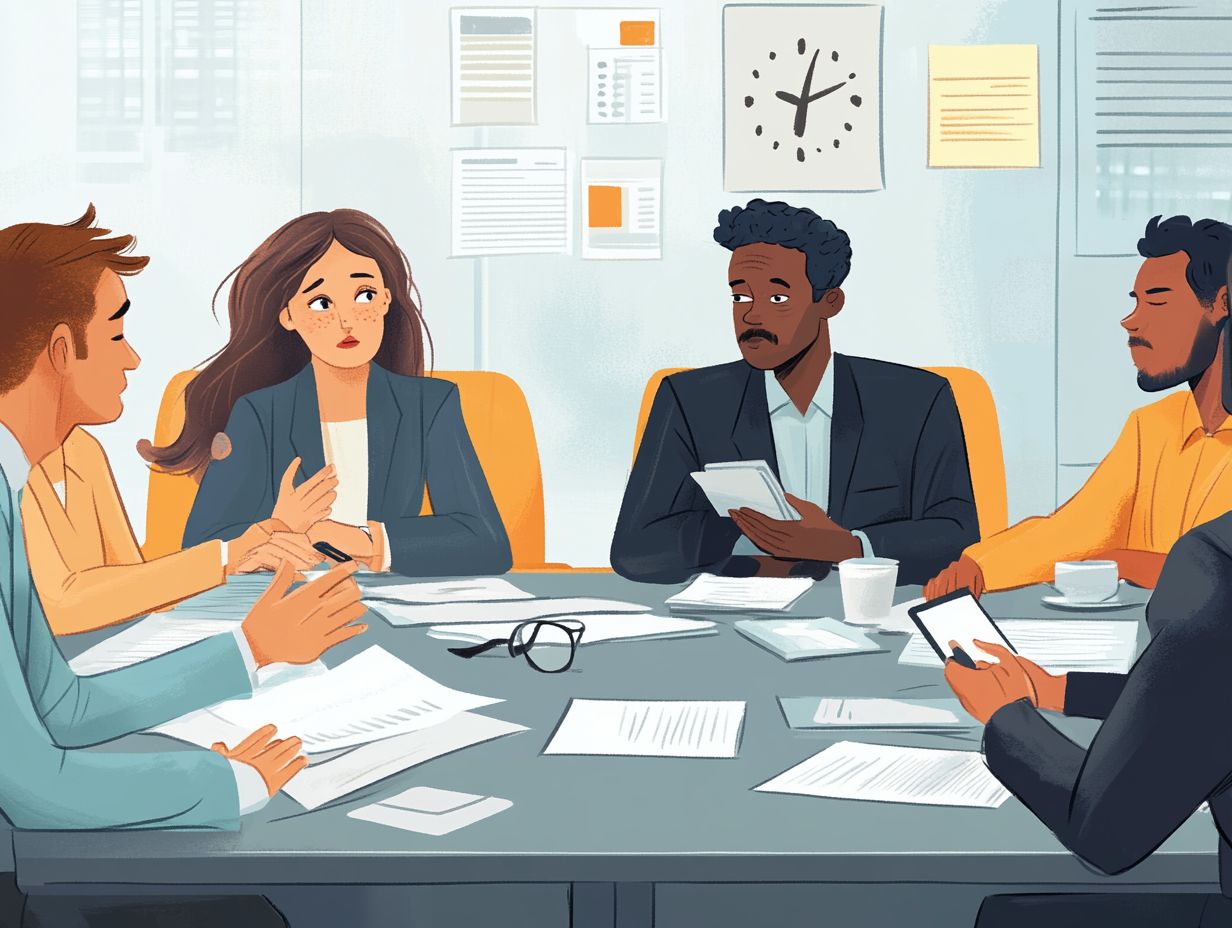What to Do When Negotiations Stall
Negotiation stalls can serve as frustrating roadblocks in your deal-making process. They leave you and the other party feeling stuck and disheartened.
Understanding the common reasons behind these stalls is essential to handle them well. This article delves into strategies that can help you break the deadlock, from honing your communication techniques to fostering compromise and collaboration.
You ll also discover when it may be wise to walk away. Plus, you ll find ways to prevent stalls in future negotiations through thorough preparation and relationship-building.
Whether you re a seasoned negotiator or just beginning your journey, this guide equips you with the tools needed to keep the conversation flowing smoothly.
Contents
Key Takeaways:

Identify key reasons for negotiation stalls, like trust issues or miscommunication, to navigate them better.
Use effective communication and collaboration techniques to foster a successful resolution.
Know when to walk away from a stalled negotiation by weighing the pros and cons of continued efforts.
Understanding Negotiation Stalls
Negotiation stalls can significantly impede progress in both business and personal realms. They often stem from issues like trust deficits, communication barriers, or misaligned interests among stakeholders.
You must recognize the subtle dynamics at play in negotiations. This awareness can help you pinpoint the underlying causes of any stagnation.
With this insight, you can explore new solutions and utilize effective strategies that promote decision-making and foster deeper stakeholder engagement.
By confronting emotional baggage and using constructive feedback, you can reignite momentum in the negotiation process. This will steer it toward successful outcomes that fulfill customer needs.
Common Reasons for Negotiation Stalls
Stalled negotiations often arise from several common pitfalls. These include trust issues between parties, communication barriers that impede dialogue, and the emotional baggage that participants may unwittingly bring into the negotiation arena.
These elements complicate discussions and can profoundly affect the overall value of the deal and its outcomes. For example, a lack of trust might lead to unrealistic demands or hesitation to share crucial information, making it challenging to discover common ground.
Research indicates that approximately 70% of negotiations falter due to miscommunication. This underscores the essential nature of open dialogue. Emotional baggage can trigger defensive reactions, causing parties to lose sight of the ultimate goal a mutually beneficial agreement.
By effectively addressing these issues, you can facilitate smoother negotiations and enhance the perceived value of the deal at hand.
Strategies for Breaking a Negotiation Stall
To effectively break a negotiation stall, employ a diverse array of strategies.
Consider utilizing innovative communication techniques, fostering compromise, and promoting collaboration among stakeholders. These approaches act as powerful efficiency boosters, expediting the negotiation process and paving the way for a successful deal closure.
Communication Techniques

Effective communication techniques are essential in negotiations. By employing methods such as active listening, clearly stating the benefits you bring to the table, and using feedback mechanisms, you can rebuild trust and engagement with stakeholders.
These techniques form the backbone of successful exchanges, fostering a collaborative atmosphere. For instance, when you actively listen, you convey a genuine interest in the other party’s perspective, paving the way for more meaningful dialogues.
Clearly outlining your benefits helps stakeholders grasp the merits of your proposed solutions, enhancing their receptivity. Feedback mechanisms create a continuous loop of communication that reinforces trust, making participants feel heard and valued.
Tailoring these methods to address specific trust concerns can lead to deeper engagement. This enables you to align interests and achieve mutually beneficial outcomes.
Compromise and Collaboration
Compromise and collaboration are your keys to successful negotiations. They help you meet others’ needs while achieving your own!
Engaging in open dialogue uncovers mutual benefits that may not be immediately evident. In a corporate merger negotiation, for example, both companies can identify shared growth objectives. This leads to a cohesive strategy that boosts market presence while minimizing redundancies.
In customer service, understanding a client’s specific needs can result in tailored solutions. These not only resolve their issues but also cultivate long-term loyalty.
Focusing on shared goals can transform your negotiations! Both you and your counterparts can enjoy improved relationships and heightened satisfaction, highlighting the critical role of collaboration in achieving effective results.
When to Walk Away from a Stalled Negotiation
Knowing when to walk away from a stalled negotiation is essential. It gives you the chance to reassess your priorities. You can determine if the deal s value aligns with your desired outcomes and overarching objectives.
Carefully evaluate the effects of continuing versus exiting the negotiation process. Consider decision-making authority and the engagement of all interested parties.
Assessing the Situation
Evaluate trust and emotions in stalled negotiations. Consider the long-term effects of your decisions on all parties involved.
A comprehensive approach includes analyzing the sentiments of all stakeholders. Understanding their perspectives provides valuable insights into the dynamics at play.
Exploring emotional factors like fear, frustration, or hope reveals motivations during negotiation. Weigh the possible consequences of abandoning the negotiation entirely, as this could lead to unforeseen outcomes for everyone involved.
Considering these elements helps you gain clarity and strengthen your strategy moving forward.
Avoiding Negotiation Stalls in the Future

To prevent negotiation stalls in the future, take proactive steps! This includes thorough preparation, investing in negotiation training, and making strategic adjustments tailored to each negotiation’s unique dynamics.
By doing so, you can ensure that all parties remain aligned and actively engaged throughout the process.
Preparation and Proactive Measures
Preparation and proactive measures are key elements of successful negotiation strategies. They allow you to anticipate challenges and engage stakeholders effectively, minimizing the risk of setbacks.
Thorough research and a deep understanding of your counterpart’s needs and objectives are crucial. For instance, a company that analyzes market trends and competitor strategies often secures favorable terms during contract negotiations.
Prepare detailed discussion points, identify potential sticking points, and have alternative solutions ready. This enhances your confidence and strengthens your position. It’s vital to avoid common pitfalls, such as overconfidence or neglecting emotional dynamics, which can lead to miscommunication and strained relationships.
Embracing adaptability and open-ended inquiry fosters more positive and productive dialogue.
Effective Communication Strategies
Developing effective communication strategies is essential for building trust and enhancing your influence with stakeholders. These strategies create an atmosphere of openness and collaboration during negotiations.
Using clear and concise language, actively listening to concerns, and demonstrating empathy lays the foundation for deeper connections. In business negotiations, acknowledging and validating others’ perspectives fosters a win-win dialogue.
Non-verbal cues, such as maintaining eye contact and using appropriate body language, reinforce your sincerity and engagement, which are crucial for relationship building.
Using techniques like summarizing key points helps everyone stay aligned, ultimately paving the way for more successful negotiation outcomes and a cohesive team dynamic.
Building Strong Relationships
Building strong relationships is essential to your negotiation process. Developing trust and addressing emotional baggage will greatly influence the involvement of everyone affected and overall success.
When you prioritize establishing rapport, you create an environment where open communication flourishes. Techniques like active listening (which means really hearing what others say), validating concerns, and recognizing shared goals can significantly enhance this collaborative atmosphere.
For example, in a recent merger negotiation, the parties involved organized pre-negotiation workshops aimed at fostering camaraderie. This allowed everyone to express their expectations and fears in a safe space.
As a result, the negotiation process went much smoother, leading to a successful agreement. This illustrates how effective relationship management can transform potential conflicts into opportunities for mutual benefit.
Frequently Asked Questions

What to do when negotiations stall?
If negotiations seem to have come to a standstill, it’s important to take a step back and assess the situation. One of the first steps is to try to understand the other party’s perspective and identify any potential roadblocks. From there, you can use the following strategies to get negotiations moving again.
How can I get negotiations moving again?
One effective way to get negotiations moving again is to suggest taking a break. This allows both parties to regroup, refocus, and come back with a fresh mindset. Alternatively, you can try introducing a new topic or proposal to generate new discussions and potential solutions.
What if the other party is acting difficult?
If the other party is being uncooperative or acting difficult, it’s important to remain calm and professional. Avoid getting defensive or aggressive, as this can escalate the situation. Instead, focus on finding common ground and areas of agreement to build trust and move forward.
Should I consider changing my negotiation strategy?
If negotiations have stalled, it may be a good idea to reassess your negotiation strategy. Consider whether there are alternative approaches you can take, such as using a different negotiation style or involving a mediator. Don’t be afraid to make changes or try new tactics to break through the stalemate.
What if we can’t reach an agreement?
In some cases, negotiations may not result in a mutually agreeable outcome. If this happens, it’s essential to remain professional and respectful. You can suggest revisiting the negotiation at a later time or explore other options such as involving a third party or seeking legal advice. Always have a backup plan or alternative solutions in mind.
How can we prevent negotiations from stalling in the future?
To prevent negotiations from stalling in the future, establish open and honest communication from the beginning. Set clear expectations, actively listen to each other, and be willing to compromise. Establish a timeline or deadline to keep negotiations on track.
Imagine the possibilities! Start building those relationships now to ensure your next negotiation is a success!






